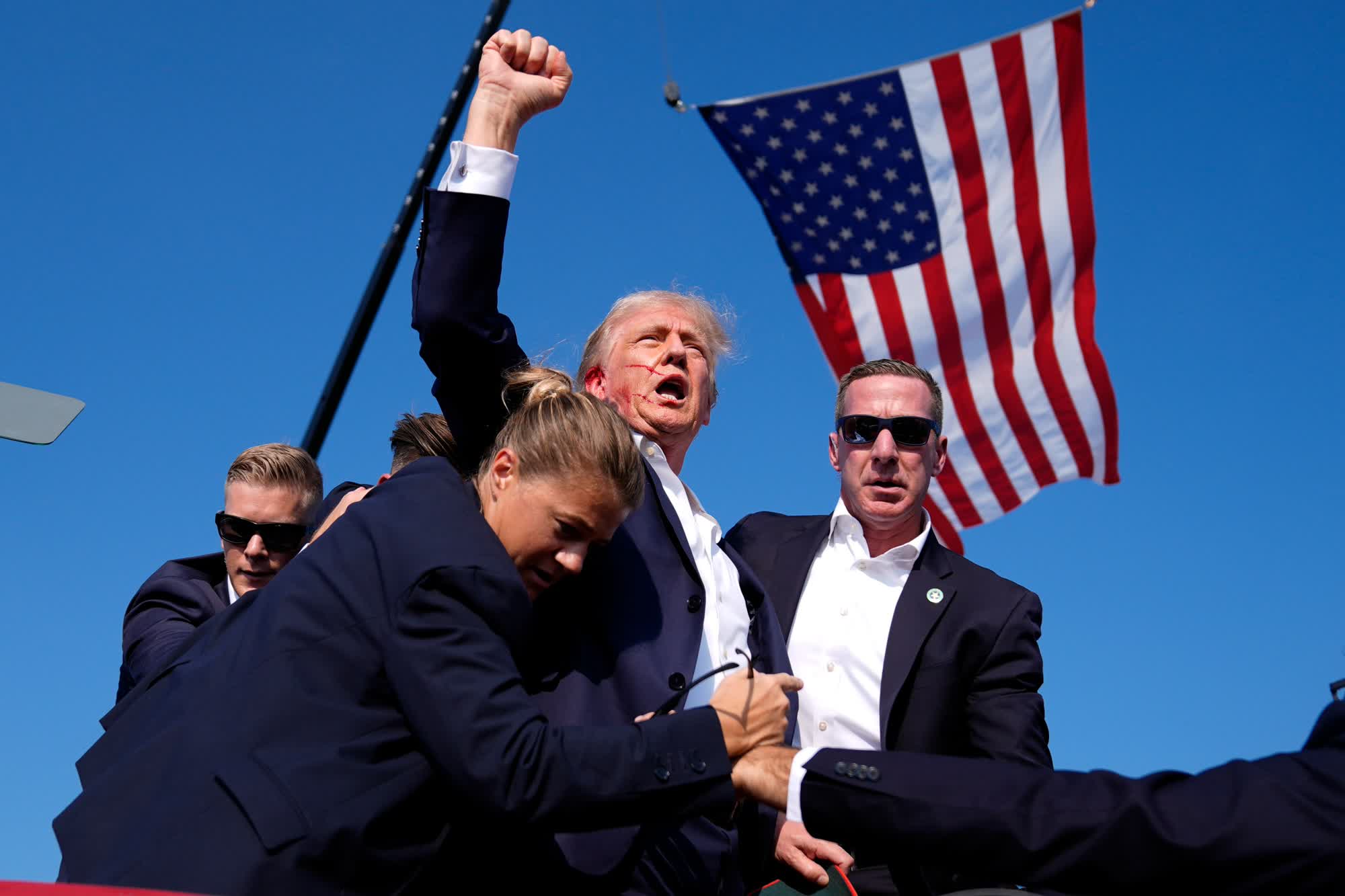Is it a bird? Is it a plane? No, it’s the crushing reality of the United States’ political system! And in a society where empathy is running ever-thinner, suffering is reduced to collateral damage, and everything can seem utterly backwards, there is one man at the centre of it all who only stands to benefit.
Donald Trump first emerged in the mainstream political sphere during the 2016 US election cycle. Over the past eight years, this man, this Simpsons skit come-to-life, has transformed into a figure so significant that people have attempted to publicly assassinate him multiple times. He is a character so divisive that he became eponymous of his own sociopolitical movement: the nightmare now known as Trumpism. Trump is both reviled and revered, wielding a power that far surpasses his personal character. Ahead of this November’s election, division in the US has reached a critical state, posing the question of exactly how we got to this point.
Trump and his team have worked mercilessly at creating an image which transcends the traditional Republican identity, drawing from populist rhetoric in the face of growing societal discontent. The “Make America Great Again” ideology is striking a raw nerve in the wake of the COVID-19 pandemic, the rising prevalence of ill mental health, and the isolation begotten through years of social media influence. In creating an in-group that seeks to exclude those who disagree with his predominant message, Trump has launched the age-old cheat code for loneliness: put simply, hatred. He appeals to a group who feel increasingly disillusioned with the status quo. He operates as a symbol for unity for his supporters – at the expense of many the common American his campaign seems to centre itself around representing.
By separating himself from established systems such as news media and government, Trump has effectively shaped a movement around himself rather than his policies. Slogans, rallies, even fashion shows and musical interludes have replaced authentic political ambition. His self-styled status as an outsider— someone who understands the plight of the average individual despite being a member of the economic elite—was implausible on paper and invited scepticism as soon as the first rumblings of his candidacy back in the Obama administration. Yet what has ensued during the past decade has redefined populism itself. Paradoxically, marrying the benefits of an elite insider capable of wide-scale change with the position of an outsider has paid off.
His appeal is rooted in this audacious rejection of modern socio-political norms. Career politicians can be untrustworthy, thus Trump’s disregard for convention takes the position as the authentic alternative. Financial crises have devastated millions of families worldwide, therefore, Trump’s business acumen presents a misguided solution.
Love him or loathe him, Donald Trump is a figure that undoubtedly invites speculation across disciplines. Body language experts have pointed to a manufactured image of precision, activity, and authority. Sociologists scrutinise his divisive style. His diamond-encrusted, “small loan of a million dollars” lifestyle does not match up with his public perception; his image is the primary actor here, rather than who he is. Trump—the man—is a businessman and ex-reality star far past his prime, but what he embodies separately is a social phenomenon. Therefore, the key to understanding his popularity is not to view him as a politician, but as a spectacle.
Crucially, this spectacle is not merely a coincidence, but came about through a series of deliberate choices. The Trump campaign has been remarkably selective with his media appearances, limiting interviews in order to maintain tight control over his public perception. His team manufactures the idea that Trump is faultless, an omniscient hero, shutting down any criticism as “fake news” and avoiding the fact-checking that would crumble his rhetoric-based arguments.
Politics as performance, a less-explored yet deeply consequential idea, offers an explanation of some of his strategies. His rallies are more reminiscent of theatrical monologues than traditional political ambition, meticulously orchestrated in order to continually establish his larger-than-life persona. Online, he has capitalised on the growing ties between social media and identity to reinforce his character, the ultimate protagonist in a falsified narrative wherein opponents are villainised. It is nothing but patriotic theatre, providing an emotional catharsis which cares not for the marginalised peoples it further otherises.
This brings us to Trump, the movement. His legion of supporters flock to rallies that are quite frankly unsafe, with reports of many standing until they faint and the ever-increasing threat of gun violence. There is chanting, singing, the thrill of being part of something bigger, and a chance to escape the harsh realities of day-to-day life many are facing within a global loneliness crisis. Supporters desperate for connection in an unfeeling world accept his every word without a care for evidence. There is a widespread disregard for legitimate information that can only be likened to mass hysteria. Sixteenth century France saw a plague of people dancing until they died; in the US in 2024, the delusional worship Trump until they pass out from exhaustion, and take his bullets.
When an environment that disregards information is cultivated, scapegoating becomes remarkably easy. The imagined threat of immigration in particular, forms a key part of Trumpist ideology, with an ideological propensity to blame a misrepresented illegal immigration crisis for questionably related issues. Dehumanised individuals likened to “aliens” take the place of a common enemy, directing valid anger and fear regarding the direction of contemporary society towards an expedient, innocent target. This trend carries across a number of minority groups, with transgender people also being labelled as a threat to American identity despite the demographic’s rarity within society.
Trump’s philosophy bleeds into political life across the western world. As a Brit myself, it feels pertinent to draw a connection between Trump’s otherising, populist style and the results of the UK’s 2024 general election. Earlier this year, Trump’s long-standing ally Nigel Farage led the Reform Party (formerly the Brexit Party) to a staggering 12.3 point increase in vote share. Citing similar issues such as immigration and wokeness, the party succeeded in gaining a parliament seat in majority working-class areas impacted harshly by the cost of living crisis. Voters, disillusioned with traditional politics, sought an alternative to the Conservative and Labour parties which have led the UK’s own two-party race since the Second World War.
This highlights an international trend: amid growing economic pressures, polarisation, and emotional struggles, people are turning to populist leaders who promise a return to a better society that only ever really existed for a particular group of people. Offering dumbed-down explanations for complex problems is simple, and it provides no incentive for world leaders to be genuine in their role.
The rise of Donald Trump and his ideology reveals a turning point in American and global politics, wherein personal mythology can eclipse policy, and perception overshadows solutions. In an age of performativity, Trump has tapped into something undeniable and extremely dangerous—a reality in which the narrative of the elite can reshape society as we know it. Whatever happens in the next few days, the rise of such a figure reflects a new chapter in democracy, challenging our political frameworks and destabilising social structures which are already struggling under the weight of years of misery. It is up to each citizen, now, to seek a greater understanding of the political reality in order to withstand the strain of the quick fix of populist ideology.
Other posts that may interest you:
Discover more from The Sundial Press
Subscribe to get the latest posts sent to your email.





